Blade Drag Resistance in Windage Operating of Low Pressure Steam Turbines
Abstract
1. Introduction
- Define and operate at the lowest admissible volumetric flow. This has a direct impact on the fixed and variable costs. Fixed costs are related to the potential modifications of the existing steam generator to allow for continuous low-load operation, and in defining the size of any potential auxiliary boiler that can run only when a low load is required [13].
- Run continuously at a low load to avoid cycling operation, which usually has an impact on the lifetime of key mechanical components such as turbine shafts, economizers, and reheater and superheater tubes.
- Optimize hood sprays, minimizing the risk of trailing edge erosion. A cooling system based on water sprays is installed at the low-pressure turbine exhaust. A temperature sensor is installed within the flow path to provide the signal for the automatic start and control of the spray-water quantity. The sizing of the nozzle sprays and the amount of sprayed water must be related to the ventilation power: if the ventilation power is underestimated, there would not be enough water to cool down the exhaust and the LSMB. The unit may trip for high temperature. If the ventilation power is overestimated, the resulting hood sprays are oversized. The injected water does not evaporate because not enough heat is produced by the ventilation power experienced by the LSMB. The droplets sprayed in the exhaust are dragged by the recirculating flow, eroding the trailing edge of the LSMB. This contributes to the degradation of the LSMB performance over the time, and could lead to the generation and propagation of cracks at the trailing edge of the last moving blades. This issue can be critical for blades characterized by high dynamic stresses in correspondence of the root or for moving blades produced from materials that have low fracture toughness such as titanium. Therefore, even when using hood spays, it is very important to assess the ventilation power in the most accurate way. In addition, hood sprays have no effect on the penultimate stages [14].
- Place the expansion line of the low-pressure turbine in the superheated region to avoid water droplet erosion.
2. Experimental and Numerical Methods
2.1. Experimental Setup
2.2. Numerical Setup
3. Results
3.1. Low-Load Tests
3.2. Experimental and Numerical Results
Drag Coefficient Estimation
4. Conclusions
Author Contributions
Funding
Data Availability Statement
Conflicts of Interest
Nomenclature
| A | Characteristic area |
| Cax | Axial velocity |
| CD | Drag coefficient |
| CD,ref | Reference drag coefficient |
| CFD | Computational fluid dynamics |
| Drev | Outer diameter of the reverse flow height |
| F | Frictional force on the blade in the reverse flow height |
| K | Kinetic energy per volume unit |
| LSMB | Last-stage moving blades |
| P | Power delivered to the steam by the LSMB at windage operation |
| Pa | Active power |
| Pv | Ventilation power |
| R | Mean radius of reverse flow height |
| ReRFH | Reynolds number calculated as: |
| RFH | Reverse flow height |
| T | Inlet temperature |
| TC | Test case |
| Tref | Reference temperature |
| Uav | Average circumferential velocity of the blade |
| Urev | Average rotational speed of the blade in the reverse flow area |
| α, β | Constant values |
| υ | Mean value of the kinematic viscosity of the steam recirculating in the reverse flow area |
| p | Condenser pressure |
| pref | Reference pressure |
| ρ | Mean steam density in the reverse flow height |
| Flow coefficient calculated as: | |
| ω | Rotational speed |
References
- Sigg, R.; Heinz, C.; Casey, M.; Sürken, N. Numerical and experimental investigation of a low-pressure steam turbine during windage. Proc. Inst. Mech. En.g Part A J. Power Energy 2009, 223, 697–708. [Google Scholar] [CrossRef]
- Beevers, A.; Havakechian, S.; Megerle, B. On the Prediction and Theory of the Temperature Increase of Low Pressure Last Stage Moving Blades During Low Volume Flow Conditions, and Limiting it Through Steam Extraction Methods. J. Turbomach. 2015, 137, 101002. [Google Scholar] [CrossRef]
- Neuimin, V.P. Ventilation process in a stage of an axial turbomachine. Energomashinostronie 1982, 11, 7–12. [Google Scholar]
- Lagun, V.; Simoyu, L.; Frumin, Y.Z.; Povolots, L.; Sukharev, F. Distinguishing features of operation of lpc last stages at low loads and under no-load conditions. Therm. Eng. 1971, 18, 30. [Google Scholar]
- Shnee, Y.; Ponomarev, V.; Bystritskii, L. An experimental investigation of partial operating conditions of turbine stages. Energomashinostroenie 1977, 11, 10–14. [Google Scholar]
- Brouwer, A.S.; van den Broek, M.; Seebregts, A.; Faaij, A. Operational flexibility and economics of power plants in future low-carbon power systems. Appl. Energy 2015, 156, 107–128. [Google Scholar] [CrossRef]
- Eser, P.; Singh, A.; Chokani, N.; Abhari, R.S. Effect of increased renewables generation on operation of thermal power plants. Appl. Energy 2016, 164, 723–732. [Google Scholar] [CrossRef]
- Steltz, W.G. An approach to resolving the very low flow in low pressure steam turbines. In Proceedings of the 1999 International Joint Power Generation Conference; American Society of Mechanical Engineers: Burlingame, CA, USA, 1999; Volume 2. [Google Scholar]
- Sauchev, I.; Neuimin, V.; Zhuchenko, L. Flow separation at blade root in axial flow turbines. Energomashinostroenie 1979, 3, 9–12. [Google Scholar]
- Basirico, J.; Zhou, B.; Mujezinovic, A.; Starodubtsev, Y.; Frolov, B. Testing of Full Speed No Load Operating Conditions in a Subscale Steam Turbine Test Vehicle. In Proceedings of the ASME 2011 Turbo Expo: Turbine Technical Conference and Exposition, Vancouver, BC, Canada, 6–10 June 2011; American Society of Mechanical Engineers: Vancouver, BC, Canada, 2011; pp. 2455–2461. [Google Scholar] [CrossRef]
- Filippenko, V.; Frolov, B.; Chernobrovkin, A.; Zhou, B.; Mujezinović, A.; Slepski, J. Analyses of temperature distribution on steam turbine last stage low pressure buckets at low flow operations. In Proceedings of the ASME 2011 Turbo Expo: Turbine Technical Conference and Exposition, Vancouver, BC, Canada, 6–10 June 2011; American Society of Mechanical Engineers: Burlingame, CA, USA, 2011; pp. 2463–2469. [Google Scholar] [CrossRef]
- Mambro, A.; Congiu, F.; Galloni, E. Influence of the snubber on temperature distribution at last stage blade exit of a steam turbine during low volume flow operations. Appl. Therm. Eng. 2019, 150, 937–952. [Google Scholar] [CrossRef]
- Mambro, A.; Congiu, F.; Piraccini, F. Application of GE Low Load Package on an Existing District Heating Power Plant: A Case Study. In Proceedings of the ASME 2020 Power Conference collocated with the 2020 International Conference on Nuclear Engineering, Virtual, 4–5 August 2020; American Society of Mechanical Engineers: Burlingame, CA, USA, 2020; Volume 83747, p. V001T09A003. [Google Scholar]
- Mambro, A.; Congiu, F.; Galloni, E.; Canale, L. Experimental study and modelling of the ventilation power and maximum temperature of low-pressure steam turbine last stages at low load. Appl. Energy 2019, 241, 59–72. [Google Scholar] [CrossRef]
- Mambro, A.; Galloni, E.; Congiu, F.; Maraone, N. Modelling of low-pressure steam turbines operating at very low flowrates: A multiblock approach. Appl. Therm. Eng. 2019, 158, 113782. [Google Scholar] [CrossRef]
- Mambro, A.; Congiu, F.; Galloni, E. Influence of stage design parameters on ventilation power produced by steam turbine last stage blades during low load operation. Therm. Sci. Eng. Prog. 2022, 28, 101054. [Google Scholar] [CrossRef]
- Megerle, B. Unsteady Aerodynamics of Low Pressure Steam Turbines Operating under Low Volume Flow Conditions. Ph.D. Thesis, Ècole Polytechnicque Fédérale de Lauseanne, Lausanne, Switzerland, 2014. [Google Scholar]
- Mambro, A.; Galloni, E.; Congiu, F. Assessment of the heat transfer coefficient for the prediction of ventilation power in steam turbine last stages operating at low load. Therm. Sci. Eng. Prog. 2020, 18, 100542. [Google Scholar] [CrossRef]
- Mambro, A.; Congiu, F.; Galloni, E. CFD Modelling of Steam Turbine Last Stage Blades at Low Load Using Multiple Mixing Plane Approach. In Turbo Expo: Power for Land, Sea, and Air; American Society of Mechanical Engineers: Burlingame, CA, USA, 2020; p. V009T23A012. [Google Scholar]
- Cooper, J.R.; Dooley, R.B. Revised Release on the IAPWS Industrial Formulation 1997 for the Thermodynamic Properties of Water and Steam; The International Association for the Properties of Water and Steam: Lucerne, Switzerland, 2007. [Google Scholar]
- Stein, P.; Pfoster, C.; Sell, M.; Galpin, P.; Hansen, T. Cfd modeling of low pressure steam turbine radial diffuser flow by using a novel multiple mixing plane based coupling: Simulation and validation. In Turbo Expo: Power for Land, Sea, and Air; American Society of Mechanical Engineers: Burlingame, CA, USA, 2015; Volume 56796, p. V008T26A020. [Google Scholar]
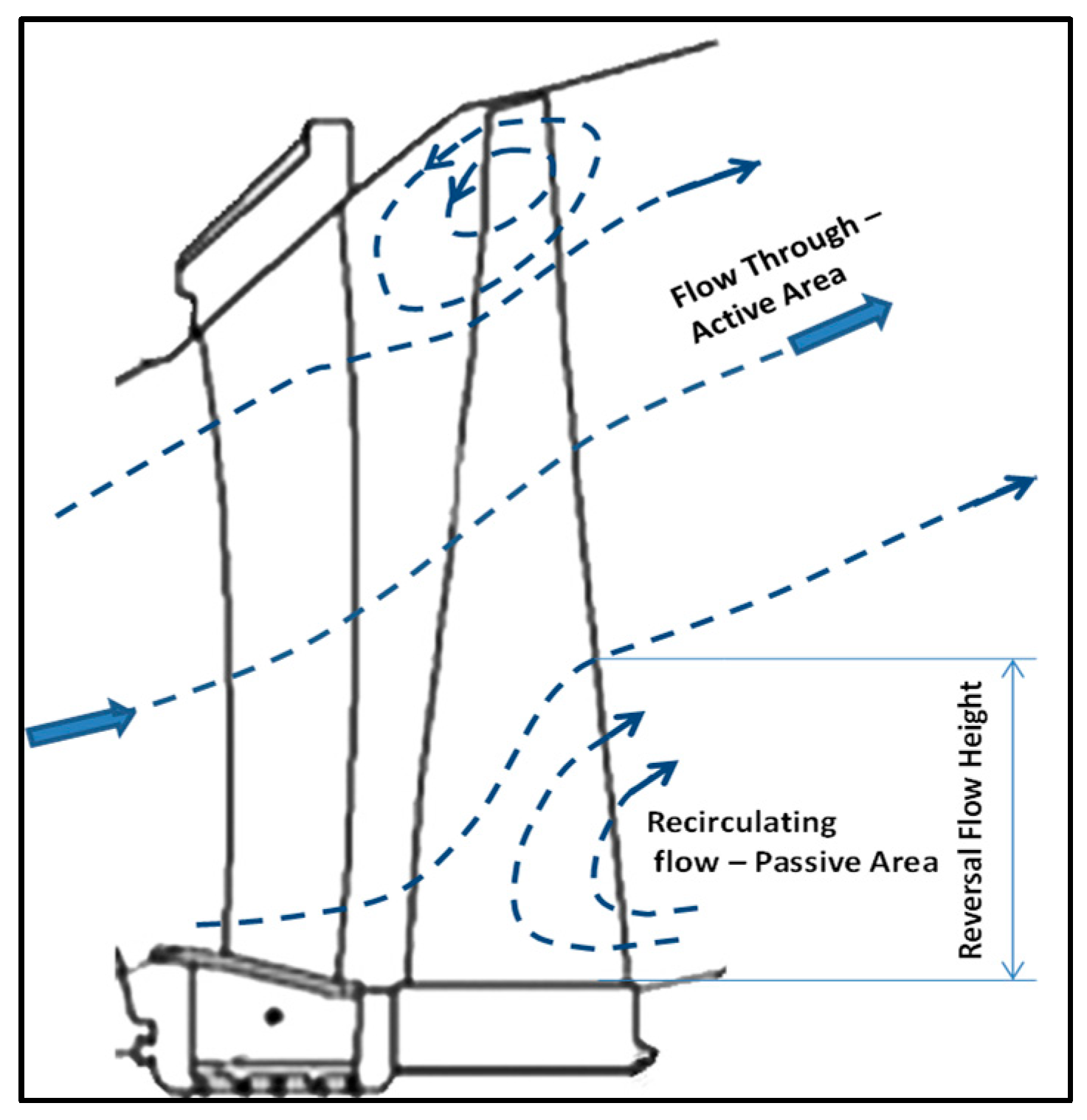
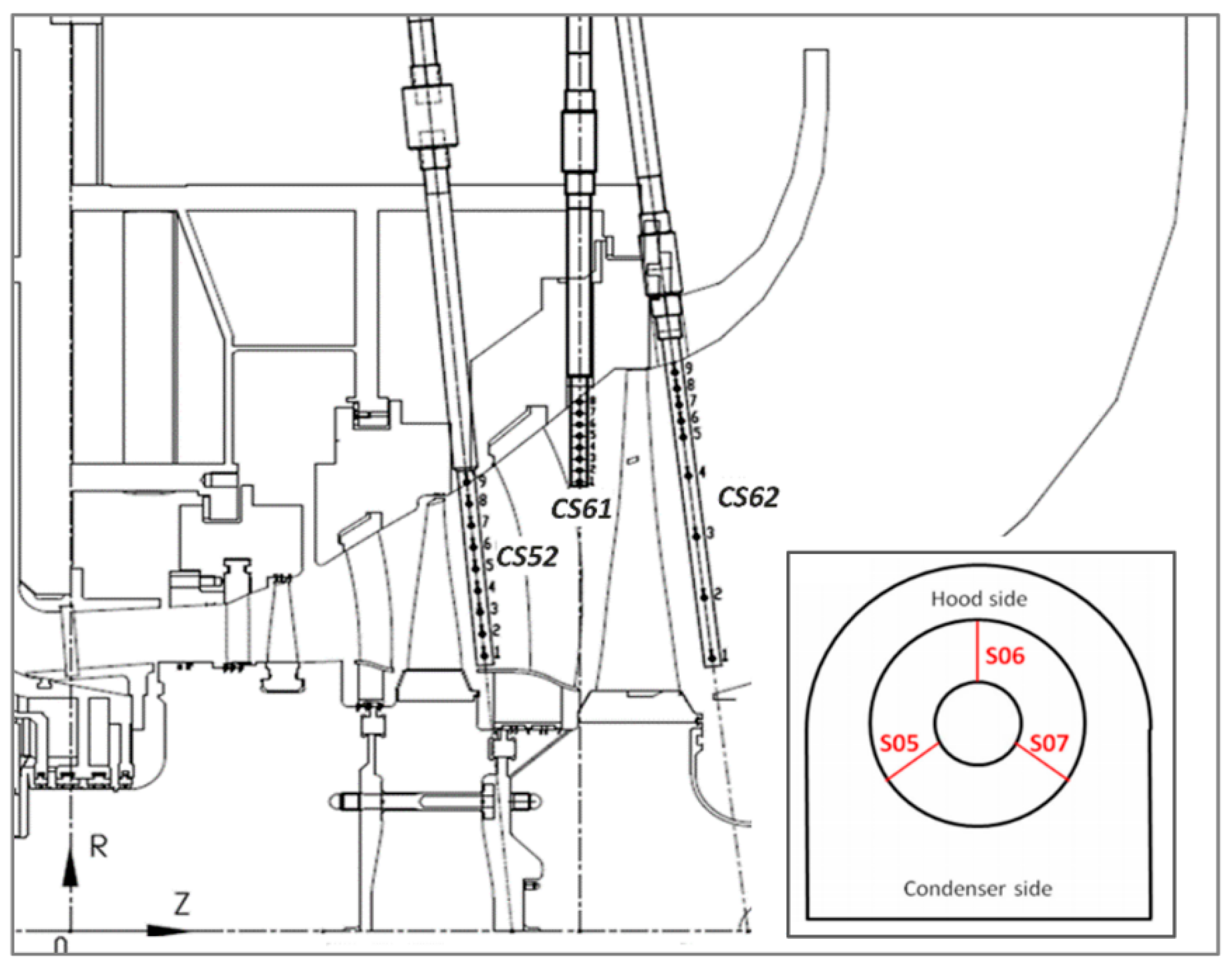
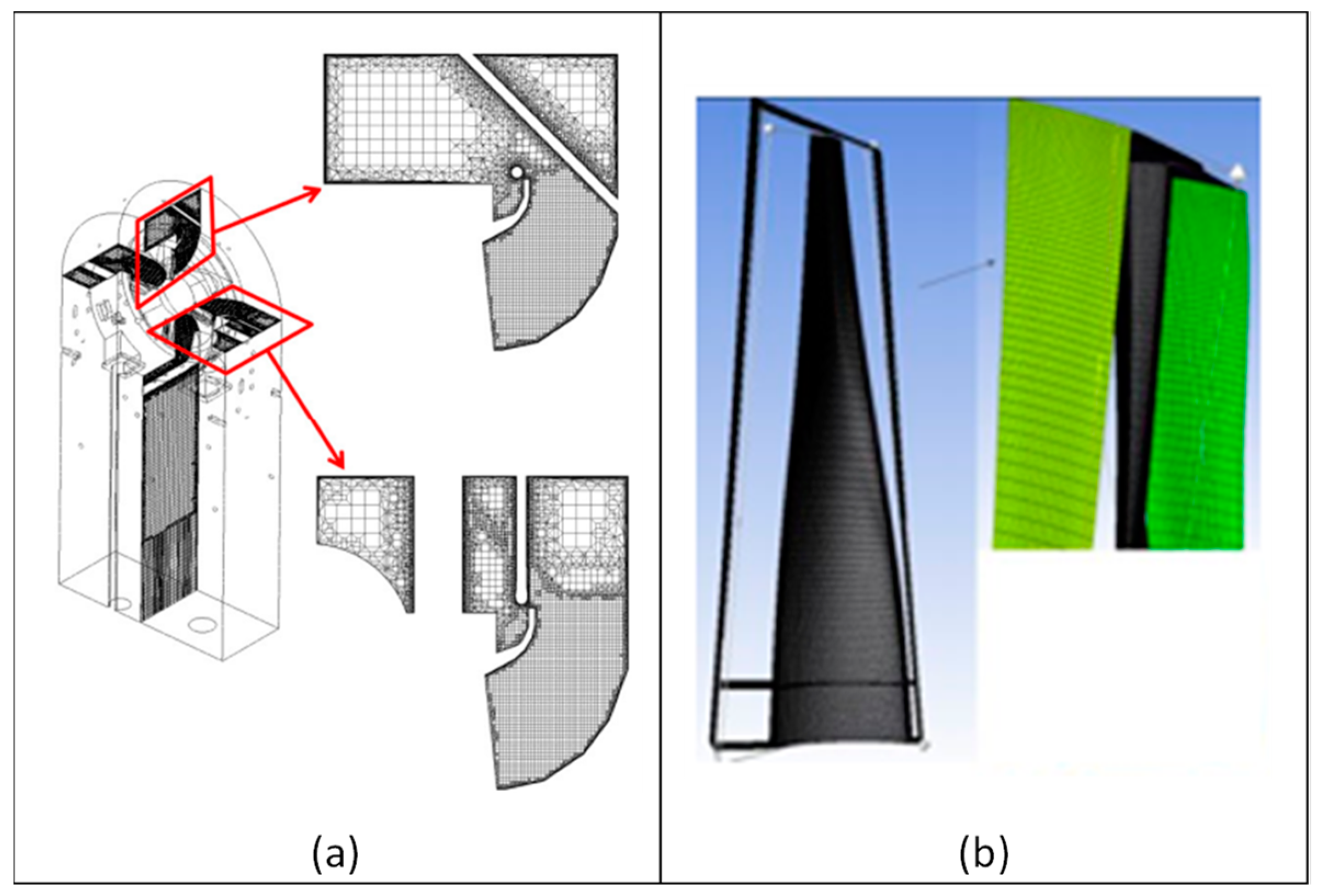
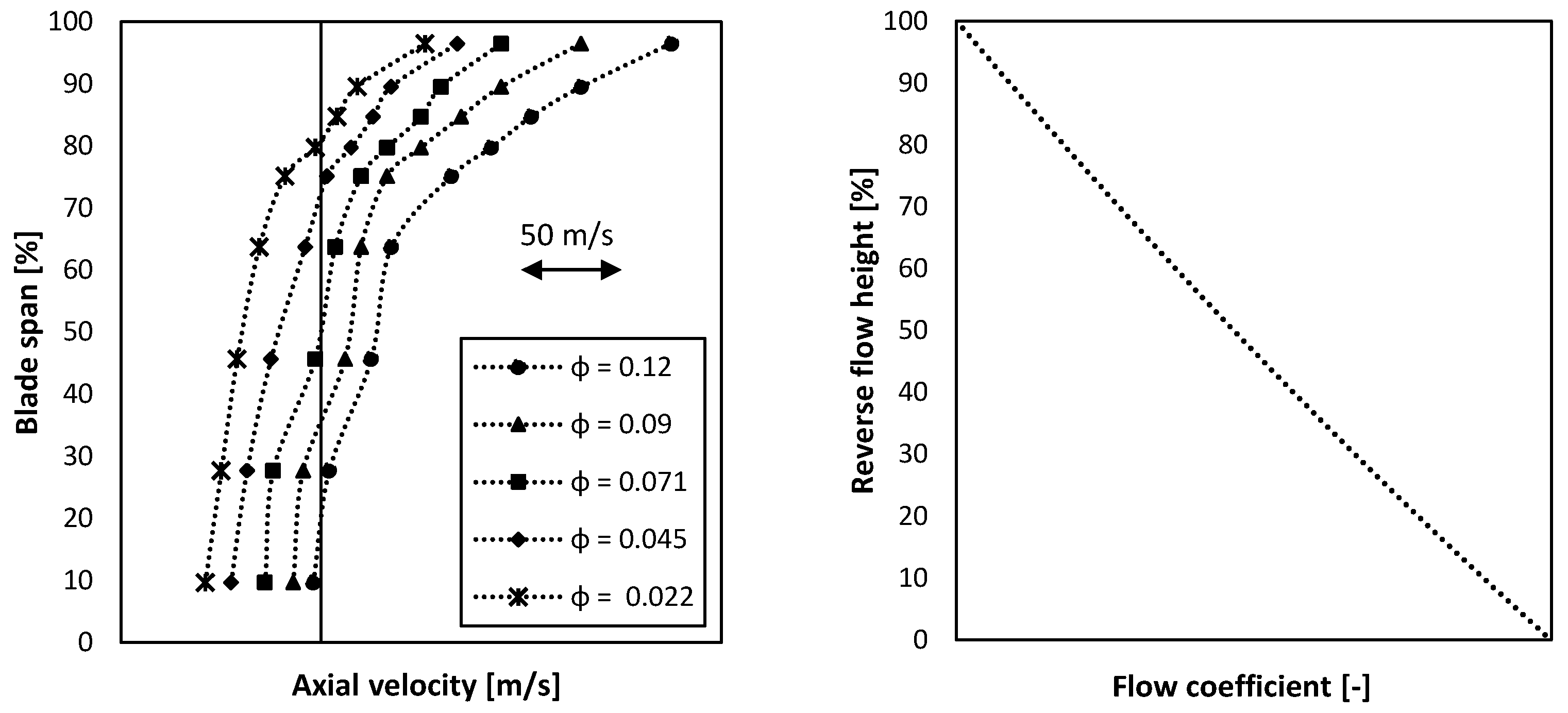
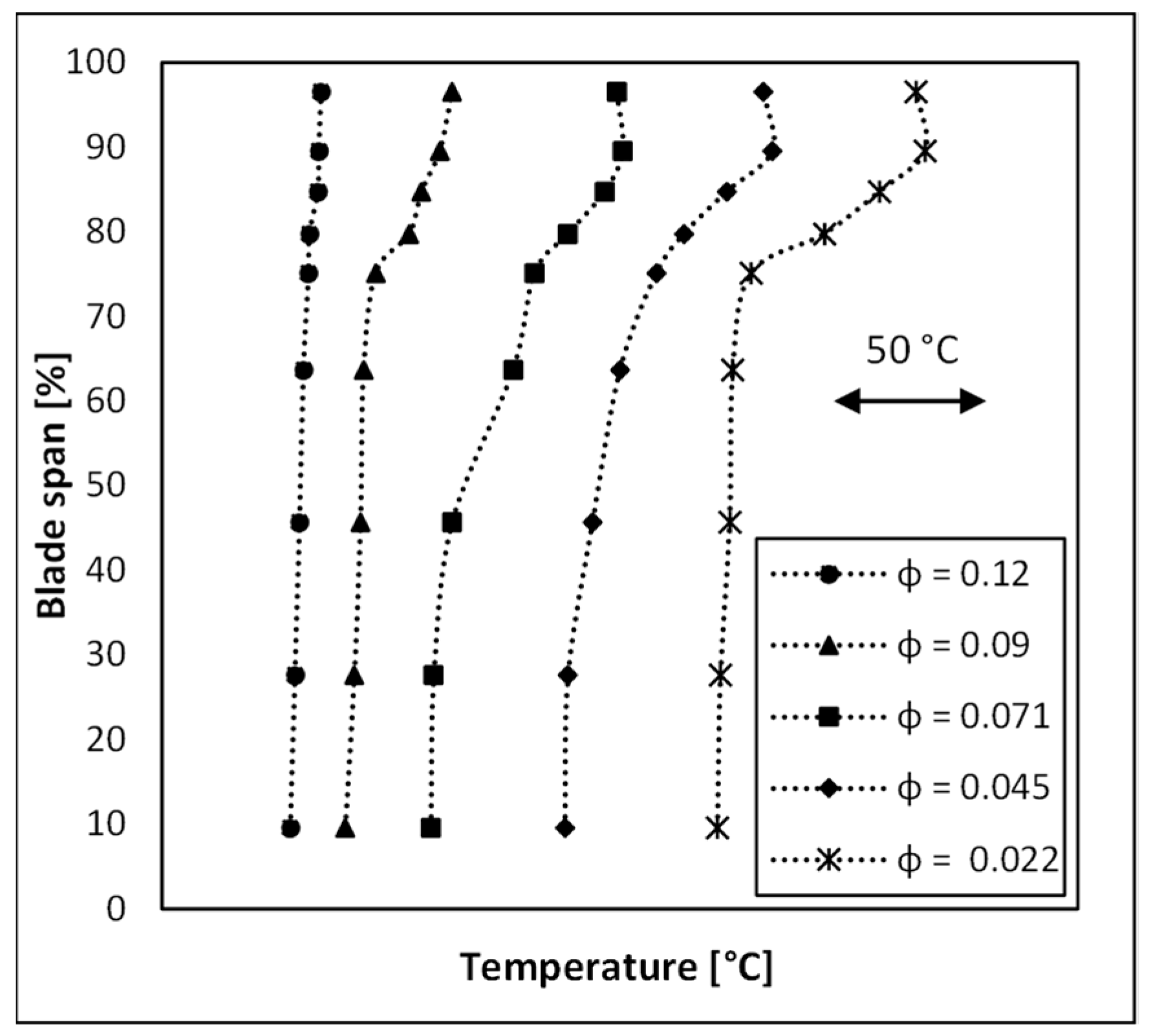
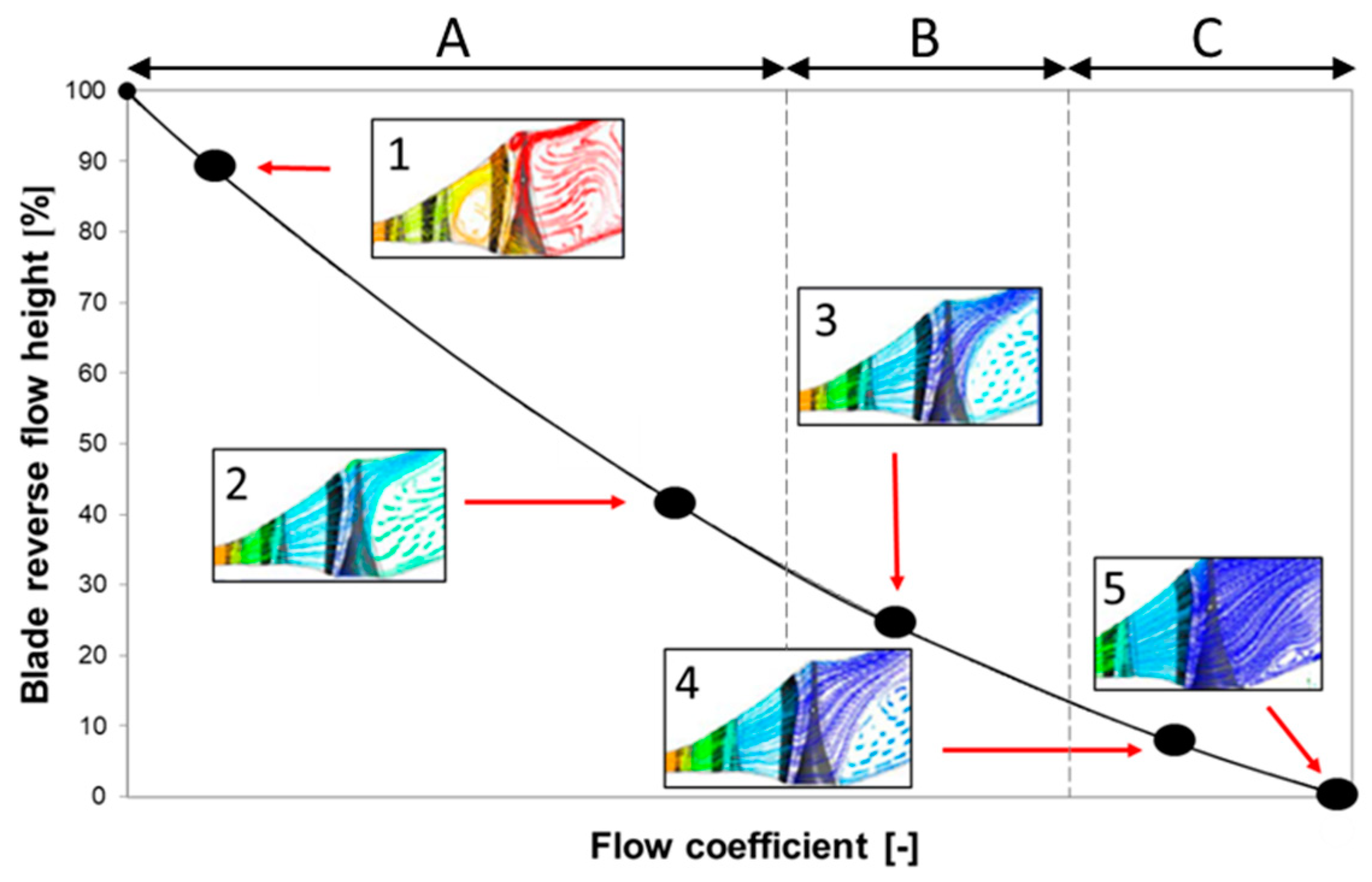
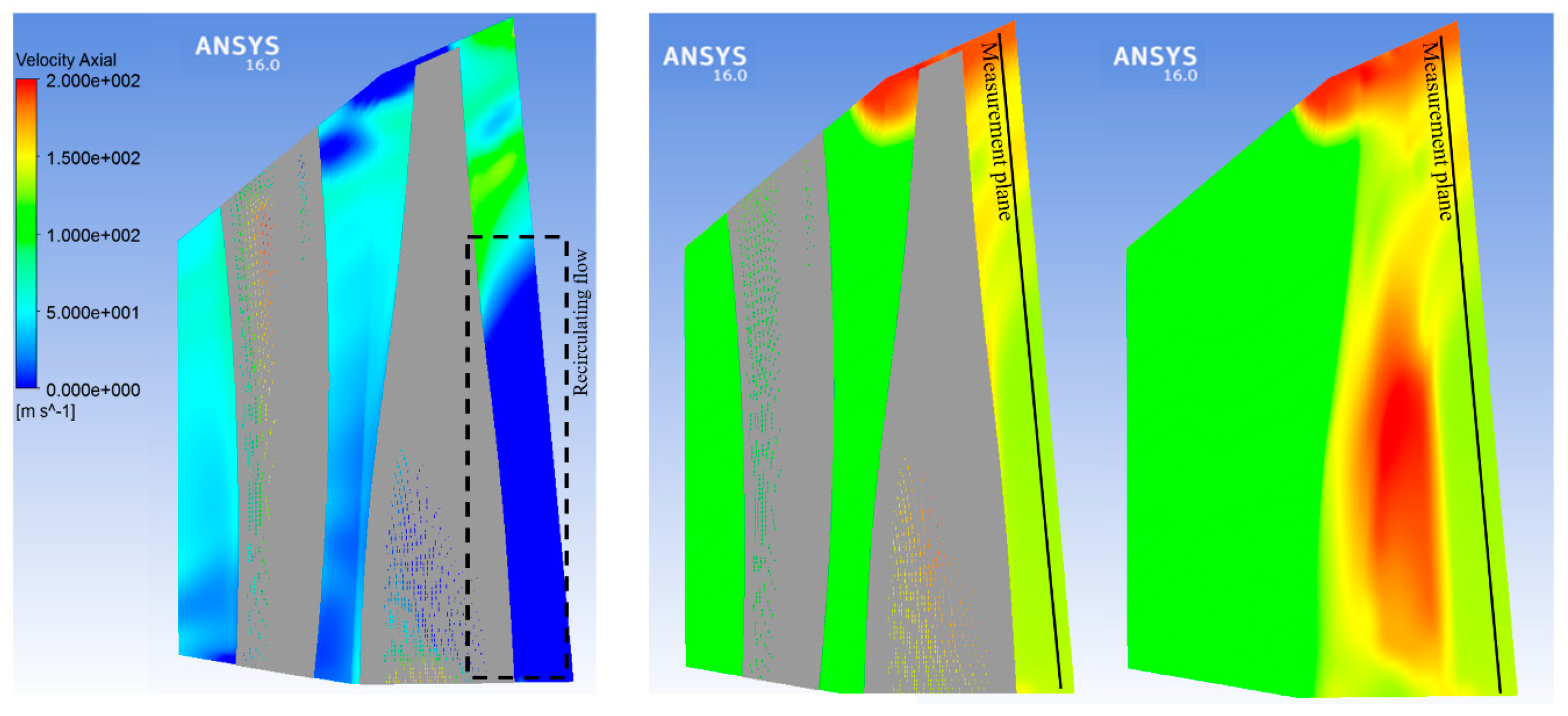
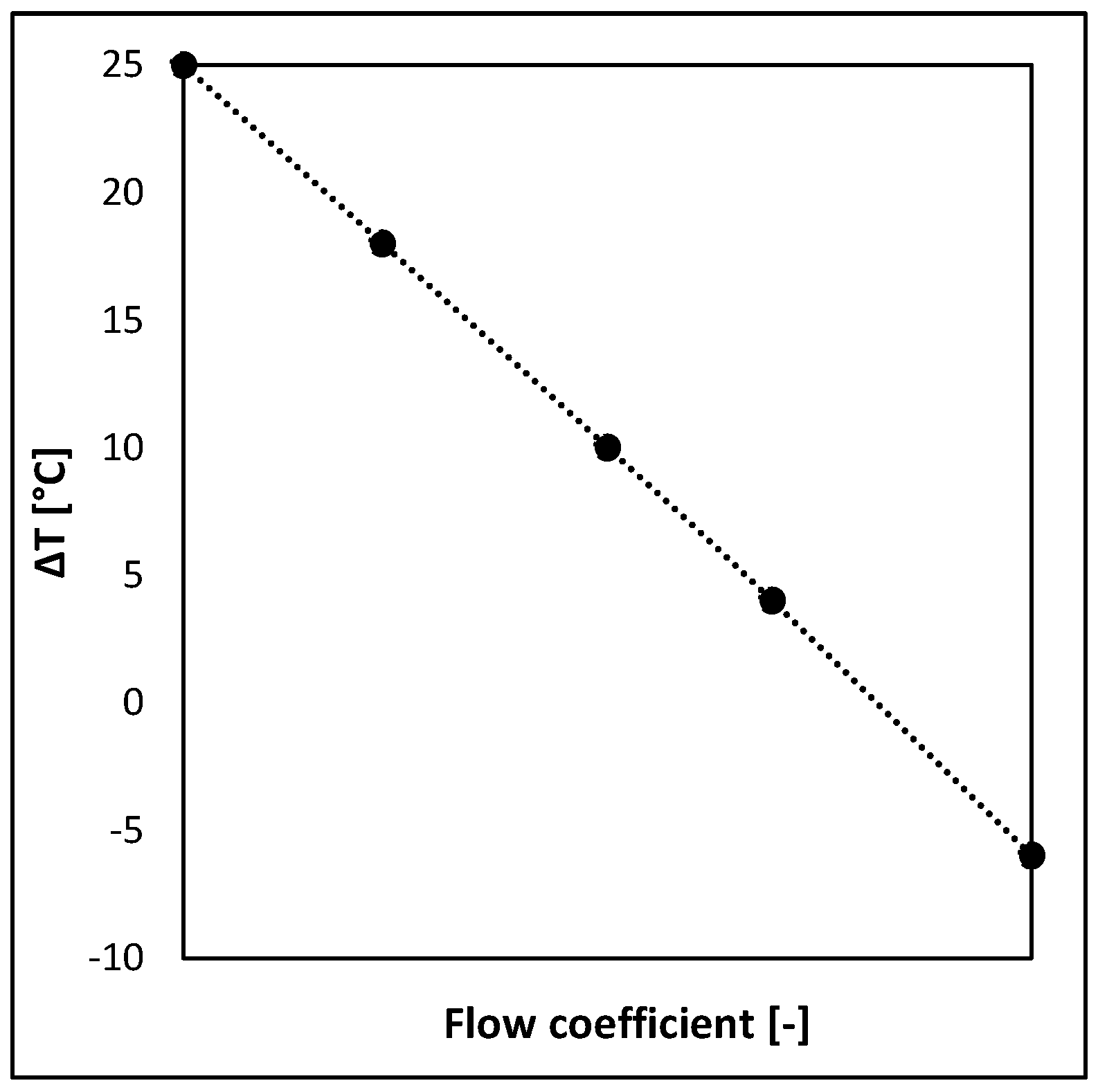
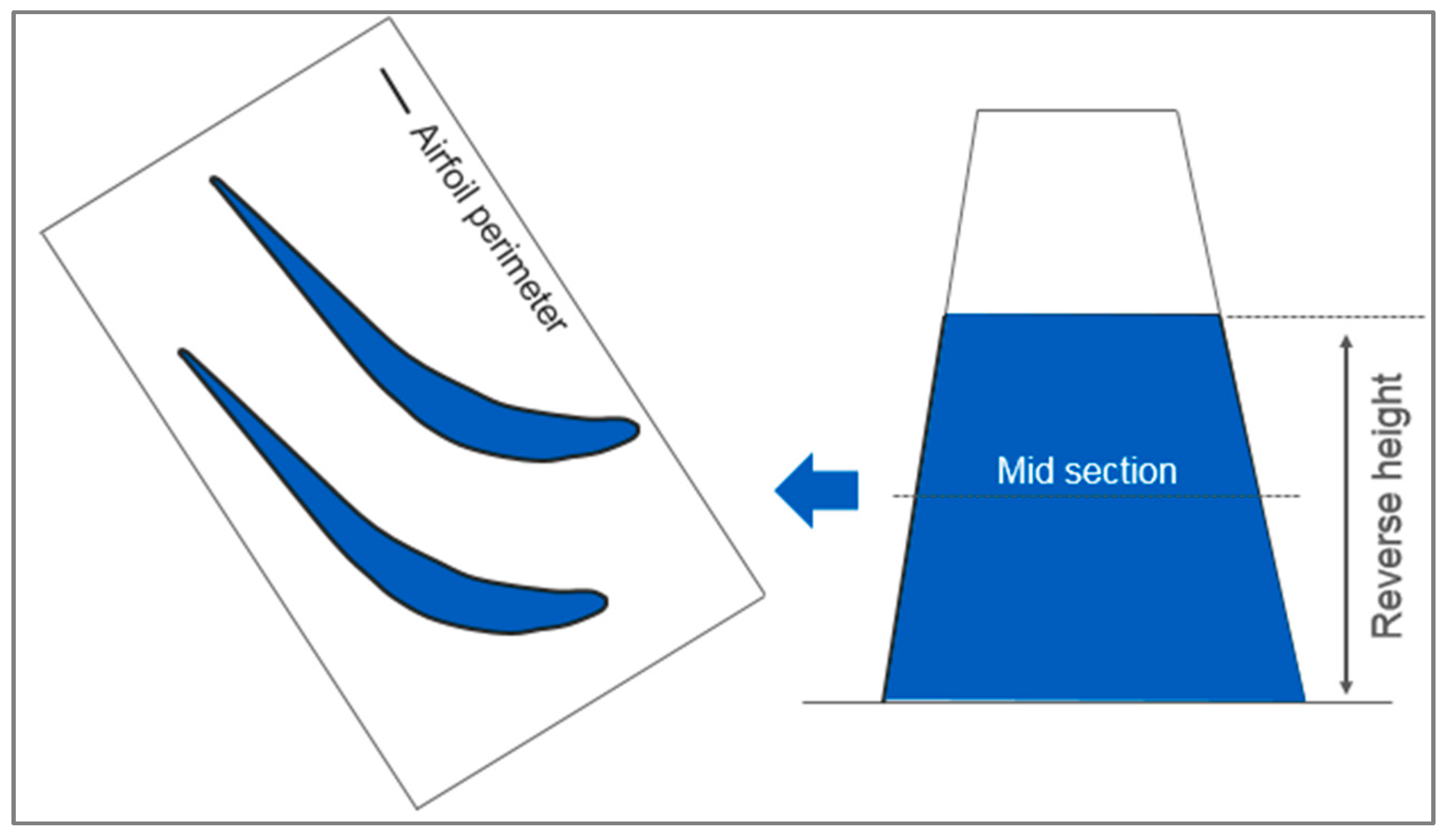
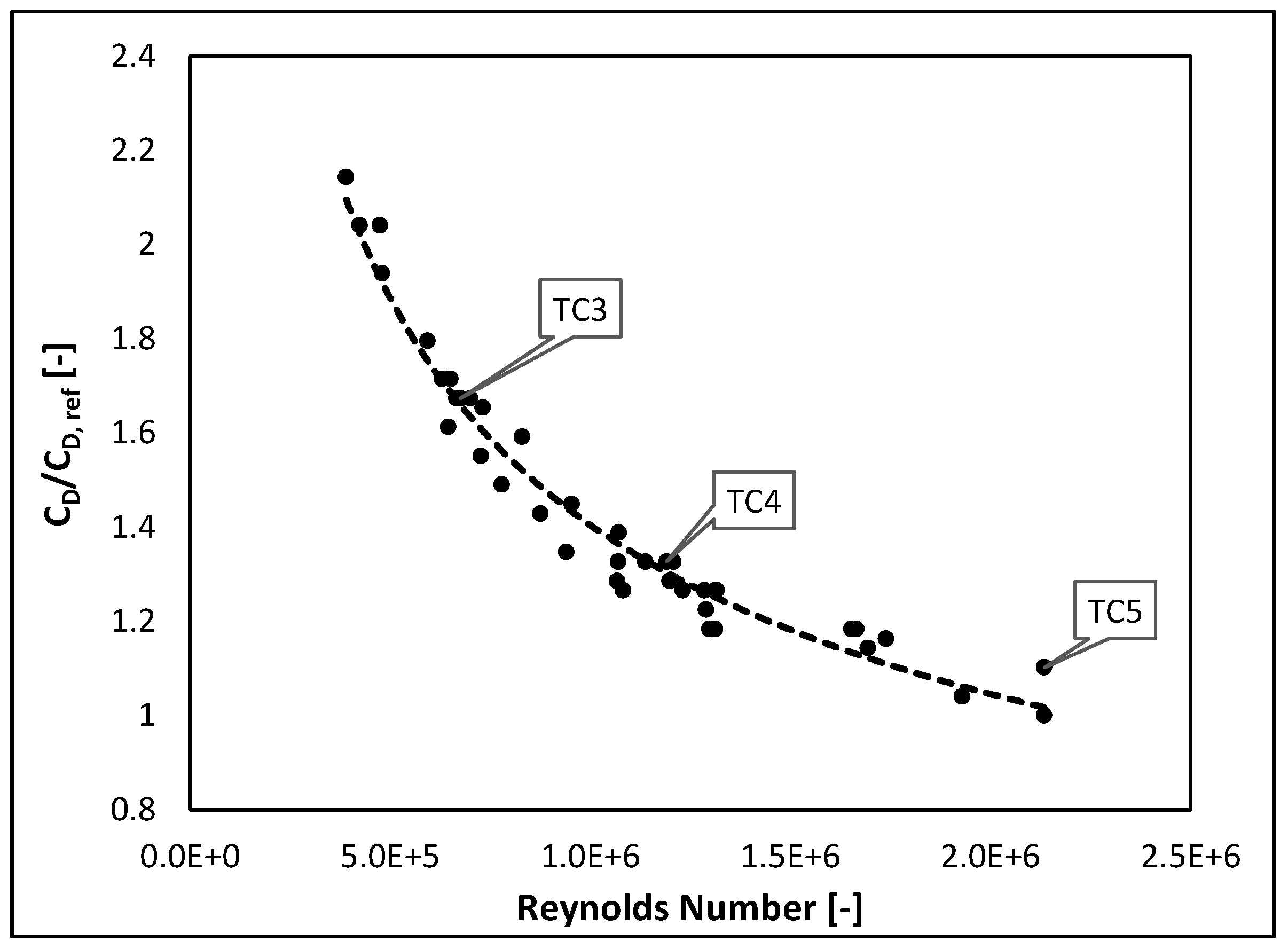
| Full-Size Exhaust Area/Reference Exhaust Area | Free Tip | Snubber | Pitch/Chord (Midsection) |
|---|---|---|---|
| 1.6 | x | Yes | 0.703 |
| 1.3 | x | Yes | 0.703 |
| 1.0 | x | Yes | 0.703 |
| 1.1 | x | Yes | 0.6653 |
| 1.0 | x | Yes | 0.784 |
| 1.0 | x | no | 0.784 |
| Last Stage Blades | |
|---|---|
| Full-size exhaust area/reference exhaust area | 1.0 |
| Pitch-to-chord ratio (midsection) | 0.784 |
| Hub-to-tip ratio LSMB | 0.45 |
| Tip-clearance/moving-blade height ratio (%) | 0.8 |
| Part span connection | yes |
| Test Case | Mass Flow (% of Maximal Design Value) | Inlet Temperature (T/Tref) | Condenser Pressure (p/pref) | Flow Coefficient () |
|---|---|---|---|---|
| 1 | 5 | 1.05 | 1.8 | 0.022 |
| 2 | 5 | 1.03 | 1.25 | 0.045 |
| 3 | 8 | 1.13 | 1.15 | 0.071 |
| 4 | 8 | 1.15 | 1.05 | 0.09 |
| 5 | 11 | 1.23 | 1 | 0.12 |
Publisher’s Note: MDPI stays neutral with regard to jurisdictional claims in published maps and institutional affiliations. |
© 2022 by the authors. Licensee MDPI, Basel, Switzerland. This article is an open access article distributed under the terms and conditions of the Creative Commons Attribution (CC BY) license (https://creativecommons.org/licenses/by/4.0/).
Share and Cite
Mambro, A.; Congiu, F.; Galloni, E.; Lanni, D. Blade Drag Resistance in Windage Operating of Low Pressure Steam Turbines. Fluids 2022, 7, 372. https://doi.org/10.3390/fluids7120372
Mambro A, Congiu F, Galloni E, Lanni D. Blade Drag Resistance in Windage Operating of Low Pressure Steam Turbines. Fluids. 2022; 7(12):372. https://doi.org/10.3390/fluids7120372
Chicago/Turabian StyleMambro, Antonio, Francesco Congiu, Enzo Galloni, and Davide Lanni. 2022. "Blade Drag Resistance in Windage Operating of Low Pressure Steam Turbines" Fluids 7, no. 12: 372. https://doi.org/10.3390/fluids7120372
APA StyleMambro, A., Congiu, F., Galloni, E., & Lanni, D. (2022). Blade Drag Resistance in Windage Operating of Low Pressure Steam Turbines. Fluids, 7(12), 372. https://doi.org/10.3390/fluids7120372







